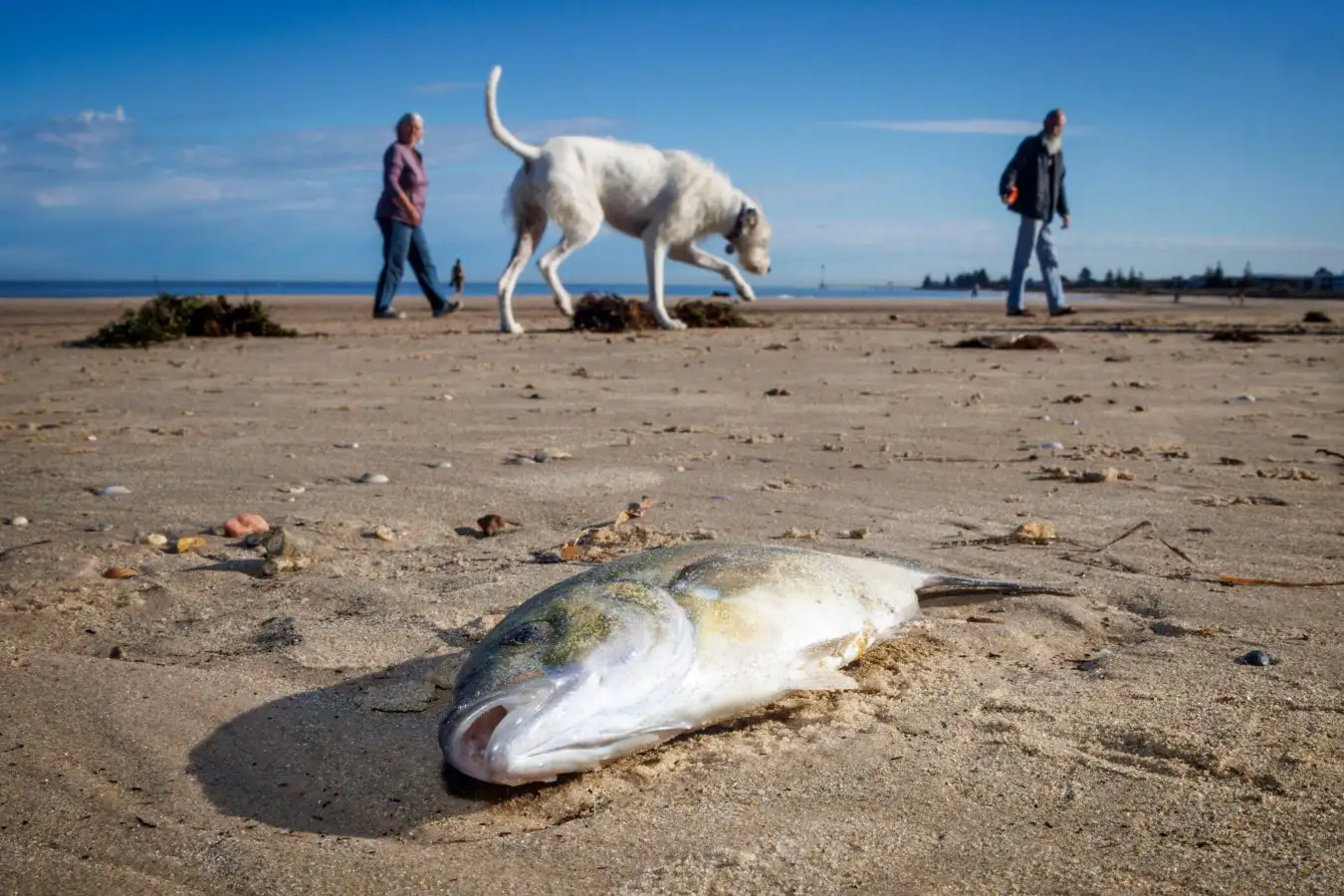
Many fish have been killed by the algal bloom in South Australia
Australian Associated Press/Alamy
Over the past eight months, a vast and deadly algal bloom in South Australia has ravaged over 20,000 square kilometres of the marine environment, killed an estimated 1 million animals from more than 550 species and had widespread impacts on human health.
Now, researchers have finally identified the species behind the ecological disaster, and they warn that it represents an “emerging international threat with unknown consequences”.
The culprit is an algal species named Karenia cristata, which has only previously been reported in two locations near South Africa, where it caused fish die-offs in 1989 and again the mid-1990s, as well as off the coast of Newfoundland, Canada.
The team has also identified a new toxin produced by K. cristata that belongs to a class of compounds called brevetoxins. These can cause nerve damage to sea life and damage the gills of fish, killing animals from seadragons to great white sharks and dolphins. Brevetoxins are also harmful to humans when inhaled or ingested.
Team member Shauna Murray at the University of Technology Sydney, Australia, says the discovery has caused concern among her overseas colleagues about what it might mean to have a new toxin-producing species that “could pop up in their waters”.
“We know that it can bloom in other countries in the world,” she says. “What we didn’t know is that cristata produced brevetoxins and that it could cause these harmful algal outbreaks that are so huge and so disruptive and last for eight months.
“Now we know that and, because we know that it occurs in other places in the world, yes, I do think that it is an international threat.”
Satellite image from 13 August showing high concentrations of chlorophyll in yellow-green along the coastline of South Australia, due to the algal bloom
ESA
Of nearly 850 deadly marine algal blooms reported worldwide between 1985 and 2025, the current event in South Australia is “amongst the most destructive and widespread” ever reported globally, according to Murray and her colleagues.
The team isn’t certain what caused such a massive and deadly bloom. Around the world, an increased frequency of harmful blooms has been linked to higher seawater temperatures, and the start of the bloom coincided with a severe marine heatwave that saw water temperatures up to 3°C higher than normal. But the bloom unexpectedly expanded after May 2025, when the sea had begun to cool.
K. cristata could potentially affect many countries with suitable conditions, so there is an urgent need to understand what could trigger a bloom, the researchers say.
Christopher Keneally at the University of Adelaide in Australia says the dominant Karenia species in the bloom was previously thought to be Karenia mikimotoi, which isn’t known to produce brevetoxins. “There is a great deal unknown about how the specific toxins produced by this species affect humans.”
He agrees that the discovery raises the prospect of an emerging threat beyond Australia. “Given the broad global distribution of this species, it is likely to already be present in low abundance in many coastal areas across the globe,” he says. “As we start to see sea surface temperatures increasing, along with high nutrients in most urbanised coastal areas, we can safely expect to see more of various bloom-forming organisms.”
Topics:
- conservation/
- marine biology
Source link : https://www.newscientist.com/article/2503068-toxic-algae-blighting-south-australia-could-pose-a-global-threat/?utm_campaign=RSS%7CNSNS&utm_source=NSNS&utm_medium=RSS&utm_content=home
Author :
Publish date : 2025-11-05 14:00:00
Copyright for syndicated content belongs to the linked Source.